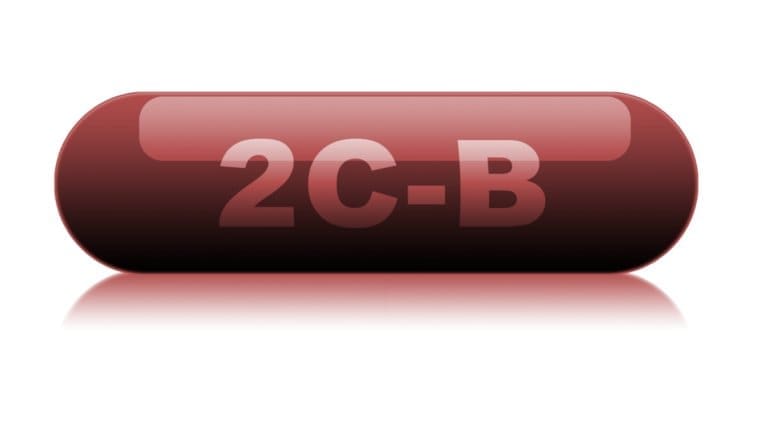Pink Cocaine - 2C-B: Effects, Dangers & How To Get Help
- October 11, 2022
- Prosperity Haven
- Addiction Treatment

Pink cocaine has been a common party drug for decades, but despite its popularity in nightclubs, many people do not know that it even exists. In fact, many people who abuse party drugs may not be aware when they are using pink cocaine. They may think they are using a different drug, as pink cocaine is frequently used to cut or even replace more expensive drugs. If you believe that someone close to you may be suffering from an addiction to pink cocaine and needs help, do not hesitate to reach out to the experts at Prosperity Haven.
In today’s guide, we will examine the components of pink cocaine, including how it came about. Additionally, we will discuss the side effects and dangers that come with pink cocaine abuse.
What Is Pink Cocaine?
Pink cocaine goes by many names, including “tussy” and all of its variations (tusi, tucci, tucibi, tuci, etc). However, all of these names refer to the same party drug that is officially known as synthetic phenylethylamine 2C-B. Even though it is commonly called pink cocaine, the drug itself has nothing to do with real cocaine or its underlying ingredients. It is called pink cocaine because it usually comes in the form of a pink pill or powder that can be swallowed or snorted.
Pink Cocaine Ingredients
The chemical name for pink cocaine is 4-Bromo-2,5-dimethoxyphenethylamine (C10H14BrNO2). Pink cocaine is in the 2C class of drugs known as phenylethylamine designer drugs. All drugs within this group are stimulants with psychoactive effects. Consequently, pink cocaine is frequently added as a contaminant or an additive to amphetamines, methamphetamine, and MDMA (also known as ecstasy). This is one of the main reasons that drug abusers may ingest pink cocaine without even knowing it.
Since pink cocaine can be sold or ingested on its own, illicit drug manufacturers can also cut the drug with other substances. As a result, users who have developed an addiction to pink cocaine may end up ingesting harmful chemicals. Like real cocaine, pink cocaine can be cut with laxatives, caffeine, boric acid, procaine, and creatine (among other things). Some of these additives can increase the stimulant effects of 2C-B (like caffeine), while others can cause negative side effects (like laxatives or boric acid).
2C-B Street Names
As previously discussed, pink cocaine goes by many different slang names. Some of these names are purely descriptive, while others are drug slang used to hide illicit drug use. In any case, here are some of the most common street names for 2C-B:
- 2s
- Afterburner Bromo
- BDMPEA
- Bromo
- Cee-Beetje
- Cloud 9
- Erox
- Eve
- Nexus
- Performax
- Spectrum
- Synergy
- Toonies
- Tucci
- Tuci
- Tucibi
- Tusi
- Tussy
- Utopia
- Venus
- XTC
- Zenith
History Of Pink Cocaine
Pink cocaine originally came about in the early 1970s when Harvard chemist Alexander Shulgin developed phenylethylamine 2C-B in a lab. Prior to inventing pink cocaine, Shulgin was known for his work with MDMA. Shortly after pink cocaine came into existence, it was marketed as a drug to improve libido and treat ED (erectile dysfunction). During this period, the drug was sold under the names Performax and Erox.
In 1995, more than two decades after its invention, 2C-B was classified as a Schedule 1 Controlled Substance by the United States Drug Enforcement Agency. This occurred after years of research concluded that the drug had no medical use for any known conditions. On the contrary, the drug was only found to have recreational side effects and a high potential for abuse.
Starting in the early 2010s, phenylethylamine 2C-B saw a major resurgence in popularity as a recreational party drug. This development largely took place in nightclubs throughout Central and South America, particularly the night scene in Colombia. It was during this time that the drug acquired its most widely known nickname: pink cocaine. Since then, illicit drug manufacturers have worked to spread the drug around the world, including the United States.
2C-B Effects
When pink cocaine is ingested, it takes roughly 2 hours for the effects to hit their peak and another 2 to 4 hours for the effects to wear off. This is further evidence that pink cocaine has nothing to do with cocaine hydrochloride (white cocaine), which has effects that tend to last for much shorter periods of time. Like many similar stimulants and hallucinogens, 2C-B has effects that can vary in nature and intensity based on the size of the dosage.
Smaller doses of 2C-B typically cause increased heartrate, greater sensual acuity, and mild euphoria. In larger doses, the effects on heartrate increase, while many users also experience nausea, vomiting, agitation, and varying degrees of hallucinations. Since 2C-B is addictive, regular abusers are more likely to increase their dosages to achieve the same desired effects. However, in extremely high dosages, 2C-B can lead to breathing issues, seizures, delirium, hypothermia, and cardiac arrest.
2C-B Dangers
Even if users do not intend to take high doses, it is nearly impossible to know the concentration of illegally manufactured 2C-B. This means that it is surprisingly easily to overdose with pink cocaine, to say nothing of the risks of ingesting dangerous chemicals used to cut the drug. Many of these chemicals only increase negative effects, particularly nausea and unsafe increases in heartrate.
However, it is important to understand exactly what dangers the drug poses to users. First, let’s take a look at the physical effects and dangers associated with them:
- Severe headaches, nausea, and vomiting
- Overstimulation of the heart and circulatory system
- Increased risk of respiratory depression, hypothermia, and cardiac arrest
Additionally, 2C-B can have dangerous effects on the mental health of users. Even people who just use the drug a few times can become addicted and potentially face both short and long-term mental health problems, including:
- Increased risk of panic attacks
- Severe cases of psychosis
- Temporary confusion and delirium
- Mental exhaustion
- Mood swings
- Anxiety
How To Get Help For Substance Abuse
It is not always easy to know if someone is abusing pink cocaine and facing an addiction to the synthetic drug. Party drugs are frequently mixed together, with abusers using varying amounts of MDMA, cocaine, 2C-B, and alcohol. These concoctions only increase the risk of potentially-fatal side effects and addiction.
So, while it may seem like party drugs are not as dangerous as “harder” drugs, this is not the case. Party drugs like pink cocaine are just as dangerous, if not more so, because these drugs are openly encouraged in night scenes and clubs around the world. They are particularly popular among younger drug abusers.
Fortunately, Prosperity Haven has the facilities and the expertise to provide high-quality treatment for substance abuse and addiction. Our residential drug rehab centers are designed to feel like a home away from home, while still offering all of the same services you could get at a traditional inpatient treatment center. Moreover, we stand out by focusing on long-term addiction relief through therapy, including both one-on-one and group sessions.
Are you or someone you know showing signs of substance abuse? Do you believe that treatment for pink cocaine addiction is the best solution to reach recovery? If so, feel free to contact the experts at Prosperity Haven to learn more about drug rehab for addiction to party drugs like 2C-B.
YOUR NEW BEGINNING
STARTS HERE
Take the First Step and Reach Out Today






